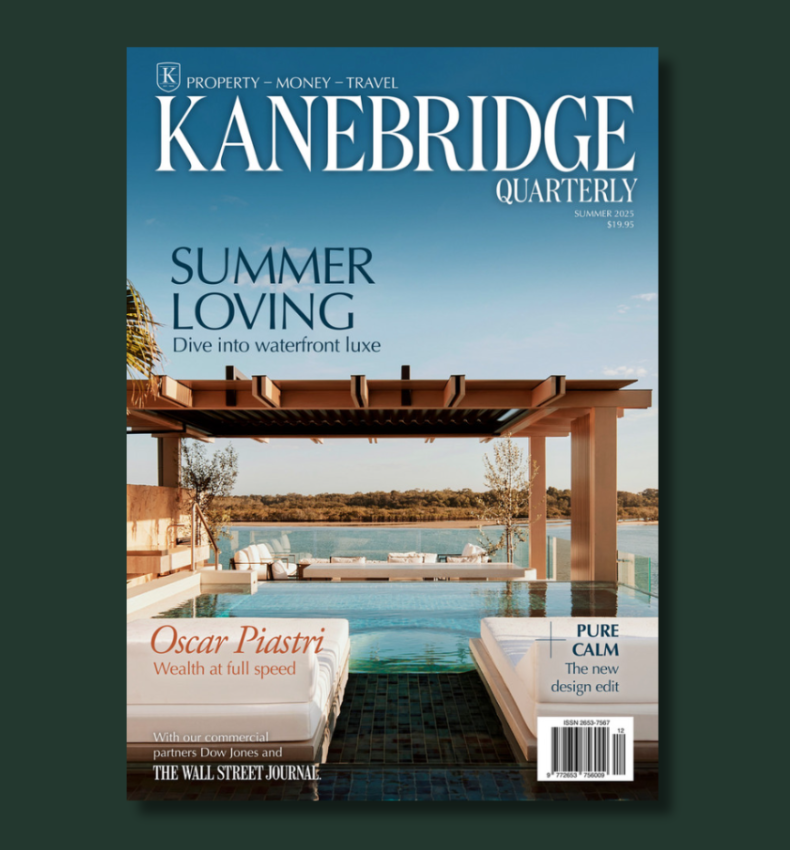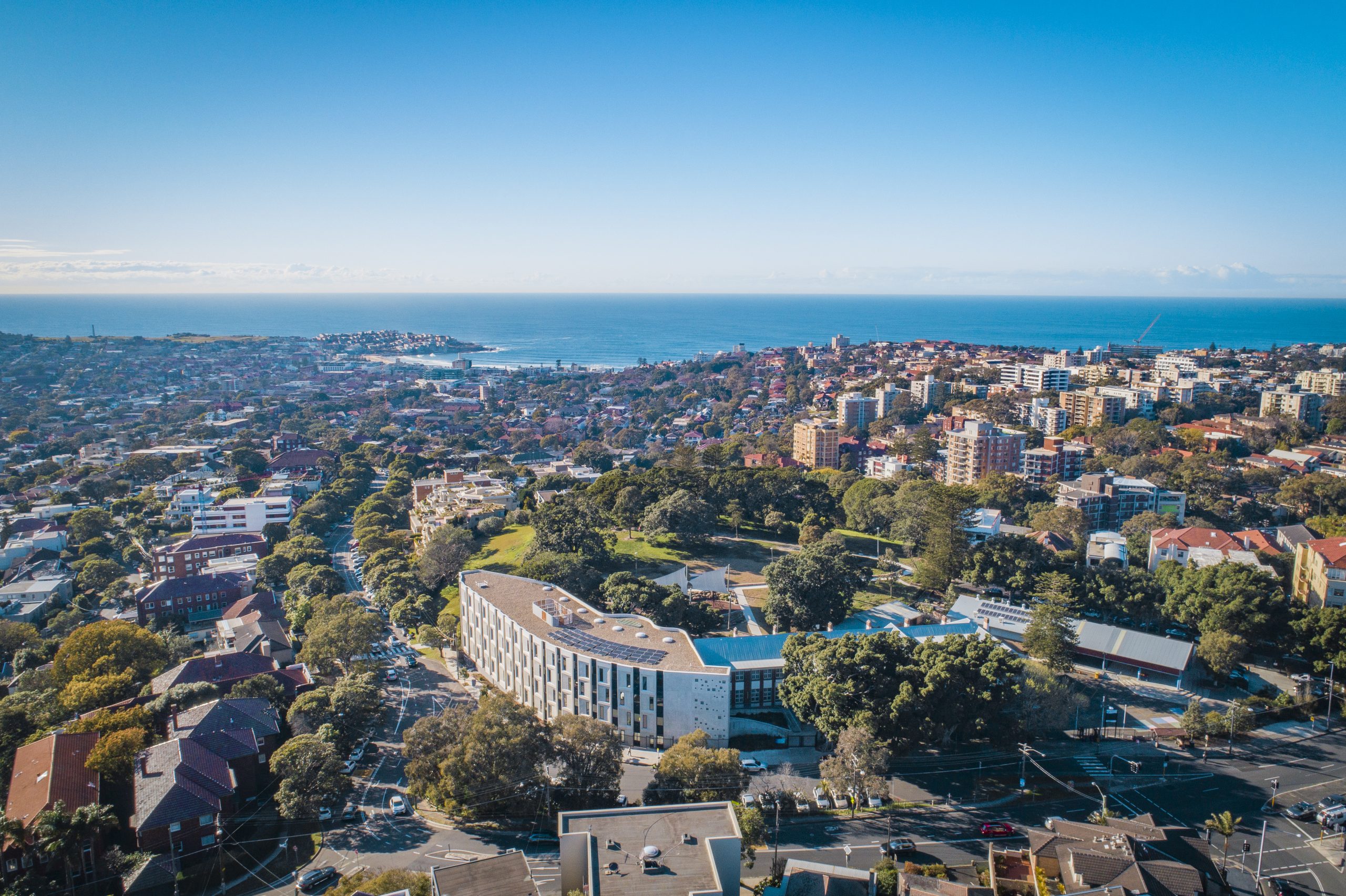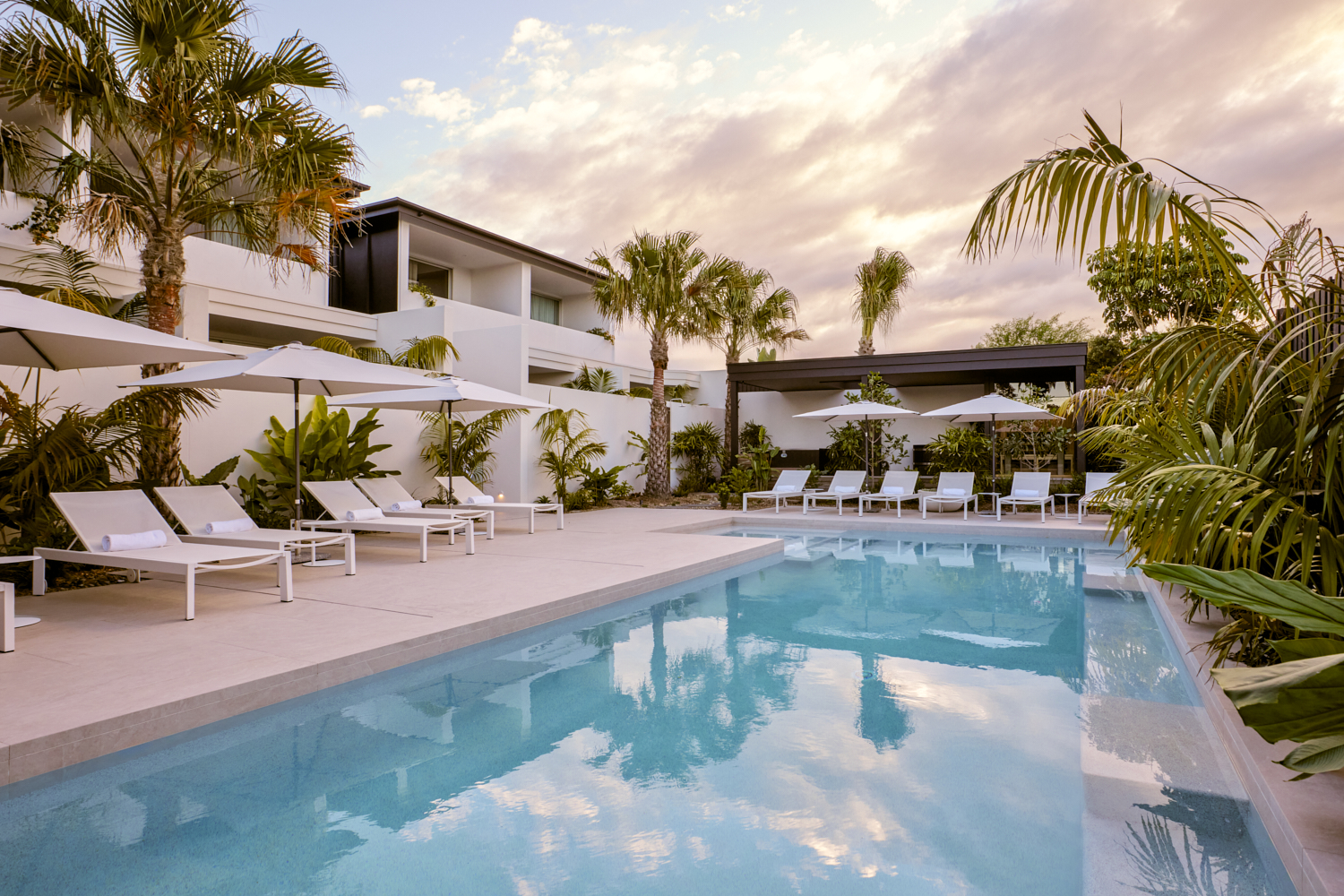Australia Joins Global Surge in Branded Residences
Australia’s luxury apartment sector is tipped for expansion, with developers and global brands eyeing opportunities as demand for prestige living rises.
Australia’s fledgling branded residences sector is poised for growth, according to McGrath Estate Agents and Knight Frank’s newly launched Residence Report.
The global branded residences market has surged from 169 schemes in 2011 to 611 today, with forecasts of more than 1,000 by 2030. Locally, the concept gained prominence with Crown Residences at One Barangaroo in Sydney.
Adam Ross, Associate Director of Prestige and International Sales at McGrath Estate Agents, said developers and buyers alike were showing strong interest.
“We have seen strong interest among developers to deliver branded schemes as well as huge demand from buyers off the back of the Crown Residences sales at One Barangaroo in Sydney,” he said.
Ross noted that design, identity and services are key.
“While an emphasis remains on providing a range of services and amenities to serve wealthy but time-poor individuals, developers are investing in globally renowned architects, place makers and interior designers to create an identity for their project, community and the surrounding environment,” he said.
Michelle Ciesielski, Head of Residential Research at McGrath Estate Agents, said demand is building.
“There’s growing demand in Australia, but nothing comparable to One Barangaroo has been greenlit yet. For developers, it’s that ideal combination of timing, cost and the right site,” she said.
Ciesielski added that the sector is expanding beyond hotels.
“Today, hotel serviceability only forms part of the branded residence concept. As this market has evolved, developers have widened their scope with brand collaboration with increasingly more being delivered with non-hotel brands.”
Brisbane, Melbourne and the Gold Coast are emerging hotspots. Projects such as Seafarers by Riverlee in Melbourne and the Mondrian Residences on the Gold Coast highlight the sector’s potential.
“The sites are there, the desire and demand are there; the only uncertainty lies with finding builders with space on the books to deliver. The race is on,” Ross said, pointing to activity in South-East Queensland ahead of the 2032 Brisbane Olympics.
Formula 1 may be the world’s most glamorous sport, but for Oscar Piastri, it’s also one of the most lucrative. At just 24, Australia’s highest-paid athlete is earning more than US$40 million a year.
From gorilla encounters in Uganda to a reimagined Okavango retreat, Abercrombie & Kent elevates its African journeys with two spectacular lodge transformations.
Ray White senior data analyst Atom Go Tian says Sydney’s elite postcodes are pulling further ahead, with Bellevue Hill dominating the nation’s most expensive streets in 2025.
Sydney has cemented its status as the nation’s luxury capital, with Kambala Road in Bellevue Hill being Australia’s most expensive street this year, posting a median house price of $39.35 million.
And, according to Ray White senior data analyst Atom Go Tian, last year’s leader, Wolseley Road, was excluded from this year’s rankings due to limited sales.
“Wolseley Road recorded only three sales this year and was therefore excluded from the rankings, though its $51.5 million median would have otherwise retained the top position,” he says.
Bellevue Hill continues its dominance, accounting for six of the nation’s top 10 streets. Tian says the suburb’s appeal lies in its rare blend of location and lifestyle advantages.
“The suburb’s enduring appeal lies in its rare combination of proximity to both the CBD and multiple beaches, harbour views, and large estate-sized blocks on tree-lined streets.”
Vaucluse remains a powerhouse in its own right. “Vaucluse extends this harbourside premium with even more direct beach access and panoramic water views,” he says.
The gulf between Sydney and the rest of the country remains striking.
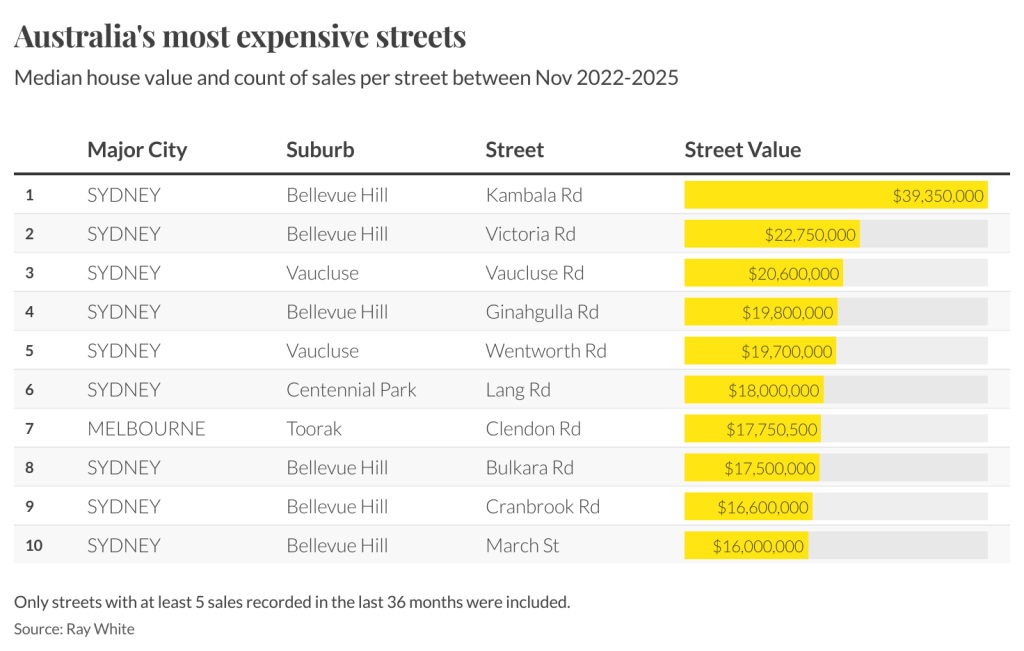
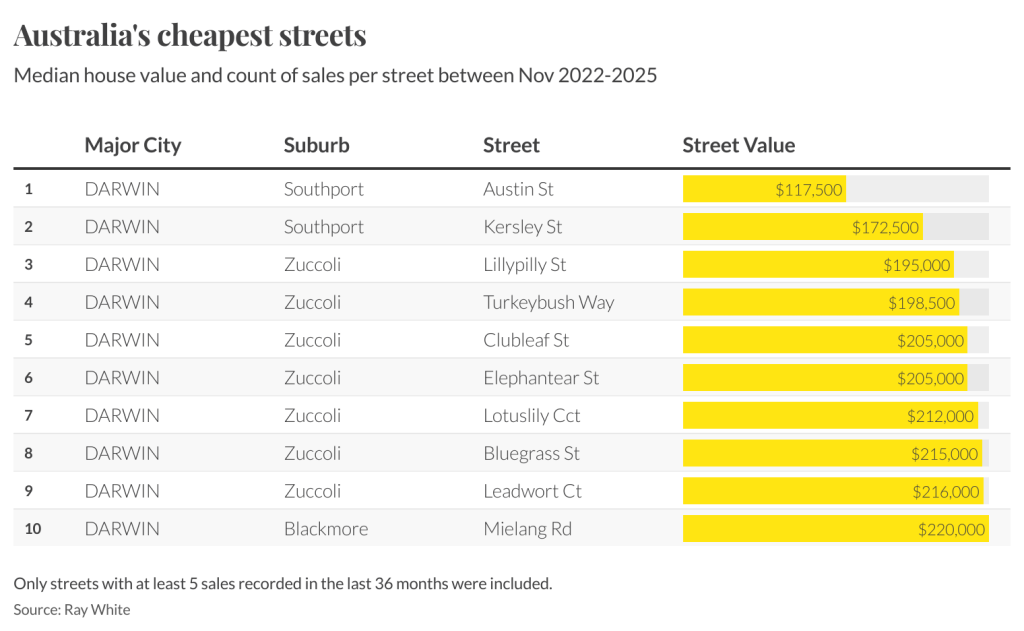
According to Tian, “Sydney’s most expensive streets are more than five times more expensive than the leading streets in Perth and Brisbane, and more than 10 times the premium streets in Canberra and Adelaide.”
He attributes this to Sydney’s economic role and geographic constraints, describing it as “Australia’s financial capital and its most internationally connected city.”
Beyond Sydney, each capital city has developed its own luxury hierarchy. Tian highlights Melbourne’s stronghold in Toorak, noting that “Melbourne’s luxury market remains centred around Toorak, led by Clendon Road, St Georges Road and Linlithgow Road.”
Brisbane’s prestige pockets are more dispersed: “Brisbane’s luxury real estate shows a more diverse pattern,” he says, led by Laidlaw Parade at $6.5 million. Perth’s top-end market remains anchored in the Peppermint Grove–Dalkeith corridor, with Forrest Street at $7.5 million.
He also points to the stark contrast at the lower end of the spectrum. “Darwin presents a mirror image, hosting all 10 of the country’s cheapest streets,” Tian says. Austin Street in Southport sits at just $117,500.
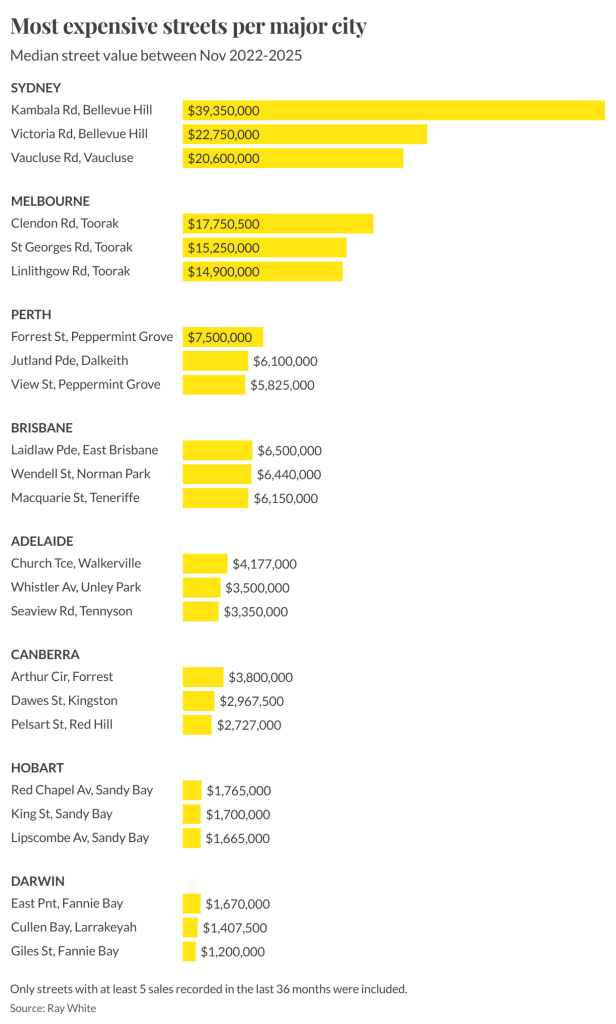

The national spread reaches its extreme in New South Wales. “Sydney emerges as the most polarised market, spanning an extraordinary range from Railway Parade in Katoomba at $385,000 to Kambala Road’s $39.35 million,” Tian says.
Methodology: Tian’s analysis examines residential house sales between November 2022 and November 2025, with only streets recording at least five sales included. Several streets with higher medians, including Black Street, Queens Avenue and Clairvaux Road in Vaucluse, were excluded because they did not meet the sales threshold.
The PG rating has become the king of the box office. The entertainment business now relies on kids dragging their parents to theatres.
From Italy’s $93,000-a-night villas to a $20,000 Bowral château, a new global ranking showcases the priciest Airbnbs available in 2026.



